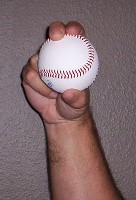Aerodynamics & Curve Balls
By:
For over a century baseball fans have debated the question of whether a "curve ball does in fact curve". Only rarely has there been objective scientific testing in order to verify what is so obviously the appearance of a curve.
Igor Sikorsky's interest had stemmed from a phone call he received from United Aircraft's Lauren (Deac) Lyman who over lunch with Walter Neff of United Airlines, had discussed the question of the trajectory of a baseball.
Mr. Sikorsky, who has a wind tunnel, called his engineers together presenting the problem as follows: "Here we have a solid sphere, moving rapidly in space and rotating on a vertical axis. You see? ... the object is to elude the man with the stick". It should be noted that baseball was a rather foreign endeavor to Mr. Sikorsky.
Being a man of science he realized that a pitched ball, traveling in a curved path, is an example of aerodynamic action in everyday life. This force which causes a spinning ball to curve in flight is the "Magnus effect".
Sikorsky's first problem was to determine how much spin a pitcher could put on a baseball in the regulation sixty-foot, six-inch distance from the mound to the plate. Engineers who were baseball fans were glad to contribute some of their off-duty time. Careful studies were made of fast-motion photographs showing the process of a single pitch. Studying the change in the position of the baseball's stitches from picture to picture proved that the rate of rotation was about five revolutions for the pitch, or about 600 revolutions per minute.
The next problem was to determine if this spin could cause a baseball to curve in flight. Testing began in the Sikorsky Vertical Wind Tunnel during the next "stand-by time" between aircraft model performance tests.
Since Big Leaguer's fast balls were officially clocked at 98.6 miles per hour, the forward speeds of the air moving through the wind tunnel was varied between 80 and 110 miles per hour.
Using official National and American League baseballs - identical except for their markings - Sikorsky impaled them on a slender spike connected to the shaft of a small motor and rotated them between zero and 1,200 revolutions per minute. The motor was mounted on a delicately-balanced scale which measured the direction and force of all pressure brought on the baseballs.
To observe maximum and minimum effects the baseballs were spiked and rotated at two different angles. In one position four seams met the wind during each revolution. This they found produced the greatest amount of side force. Only two seams met the wind in the other test position causing less friction and less side force.
Sikorsky's conclusions were that the baseball will in fact curve in the sense that the spinning baseball does follows a steady arc, rather than traveling in a straight line and then "Breaking". A pitcher who can release the baseball so that four seams meet the wind can "Break" as much as 19 inches. With the same speed and rotation a two seam pitch will break 7.5 inches.
To the batter, who views the baseballs flight at an angle, it appears that the baseball travels fairly straight most of the way and then "Breaks" suddenly and sharply near the plate, this is an optical illusion.
Note: Perception plays a big role in the curve ball: The typical curveball goes through only 3.4 inches of deviation from a straight line drawn between the pitcher's hand and the catcher's glove. However, from the perspective of the pitcher and batter, the ball moves 14.4 inches. This proves that a curve ball really curves. The wind is also a major factor in perception of the total break.
